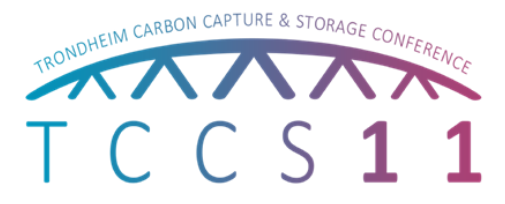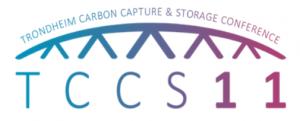Year 1 Post-Doctoral Program (January 2020 - June 2021)

Dr. Ancuta Isbasoiu holds a Ph.D. in Economics at the University of Paris-Saclay. She also completed a Master 2 in International Economics and Macroeconomic Policies at the University Paris Nanterre and a Master 1 in Trade and International Business at the University Paris-Est Créteil Val de Marne.
Dr. Ancuta Isbasoiu served as Post-Doctoral Scholar at IFP Energies nouvelles, in the Economics and Environmental Evaluation Department. During the Post-Doctoral program within the Chair «Carbon Management and Negative CO2 emissions technologies towards a low carbon future» (CarMa), Ancuta worked on the topic “Negative greenhouse gas emissions in France by 2050: techno-economic potential assessment”. More precisely, she conducted research on the economic assessment of negative greenhouse gas emissions (GHG) in France in light of the 2050 climate neutrality.
State of the art on the GHGs negative emissions
and their treatment on carbon markets
Id. card:
Project Type: Post-doctoral project proposed to the newly created Chair at IFP School
Duration: 18 months, starting on sept. 2019 (effective start January 2020)
Ideal profile for the candidate: PhD technology energy systems, carbon finance
Supervisor: Paula Coussy
Background
The concept of negative emissions gained attention since its first inclusion in the 4th IPCC report. The ambition of the Paris climate agreement may already be unachievable without negative emissions and quite all modelling scenarios limiting global warming to 1.5°C rely on the removal of CO2 from the atmosphere. Some of the technologies designed as Negatives Emissions Technologies (NETs) are based on natural processes; some others rely on human engineering (BECCS, DACCS). NETs are integrated into complex energy systems, so it is important to ensure that the total effect of all components is the permanent removal of atmospheric GHG and in the end a net decrease in the GHG concentration in the atmosphere.
A comprehensive and clear definition of when a negative emission occurs is unavoidable. Today negative emissions refer to different concepts as removal (with storage) GHG, utilization of GHG in products and GHG avoided emissions. A clear distinction should be made between physical negative emissions and avoided (potential) reductions of one technology in comparison to another one. A clear consensus on the NETs is then necessary as these NETs have financial costs, environmental and social impacts and as they can be identified as carbon offsets on carbon markets.
Scope of work:
- How to define “Negative GHG Emissions”: The objective is to word on a methodology to assess whether “negative emissions” are really negative emissions in the global sense (physical negative net emissions). What could be the guidelines to define physical negative net emissions: at the global level, at the level of industrial actors, economic sectors?
- State of the art of the technologies allowing negative net emissions (NETs). The work will first start to identify the existing technologies well known or closed to the market. Later, the student could identify the technologies at research stage with a low TRL and then the NETs solutions "out of the box”.
- Classify all the natural and human engineering processes that allow negative net emissions, with a focus on one of the Negative Emission Technologies (NETs), namely Bioenergy with carbon capture and storage (BECCS).
- Estimation of negative emissions costs: the capital expenditure and the operating costs of various BECCS technological options will be estimated and forecasted cost scenarios to 2050 provide.
- What is the potential of the negative net emissions from various BECCS technological options in France to achieve the 2050 climate neutrality? What is the complementarity between BECCS options and the availability of biomass resources? What are the needs for negative emissions in France to achieve the climate neutrality by 2050 according to the French National Low-Carbon Strategy?
- How these negative emissions are calculated / evaluated / encouraged: Define and describe the methodology used to calculate the costs and potentials for negative emissions.
- Consider positioning the negative emissions on an evaluation/relevance grid from an economic perspective. Identify the negative emissions pathway characterized by the lowest costs and the highest potential in France by 2050 necessary to move towards carbon neutrality.

On June 23, 2021, Ancuta Isbasoiu presented her post-doctoral work entitled: “Negative greenhouse gas emissions in France by 2050: techno-economic potential assessment” at the TCCS–11 Trondheim Conference on CO2 Capture, Transport and Storage.
The European Union’s goal of becoming a net-zero greenhouse gas economy by 2050 represents the cornerstone of the European Green Deal, in conformity with the EU’s global commitments under the Paris Agreement. To achieve climate neutrality goal by 2050, the deployment of Negative Emission Technologies (NETs) will be necessary. This paper focuses on one of these technologies, namely BioEnergy with Carbon Capture and Storage (BECCS). In particular, it studies the French potential in terms of negative emissions and shows to what extent BECCS can represent a viable solution for achieving climate neutrality in France by 2050.
Download the proceedings paper.
The work was conducted under the supervision of Paula Coussy (Economics and Environmental Evaluation Department, IFP Energies nouvelles).

“Negative greenhouse gas emissions in France by 2050: techno-economic potential assessment”
Ancuta Isbasoiu and Paula Coussy
TCCS–11 Trondheim Conference on CO2 Capture, Transport and Storage, Trondheim, Norway, June 21-23, 2021.
Download the proceedings paper.



